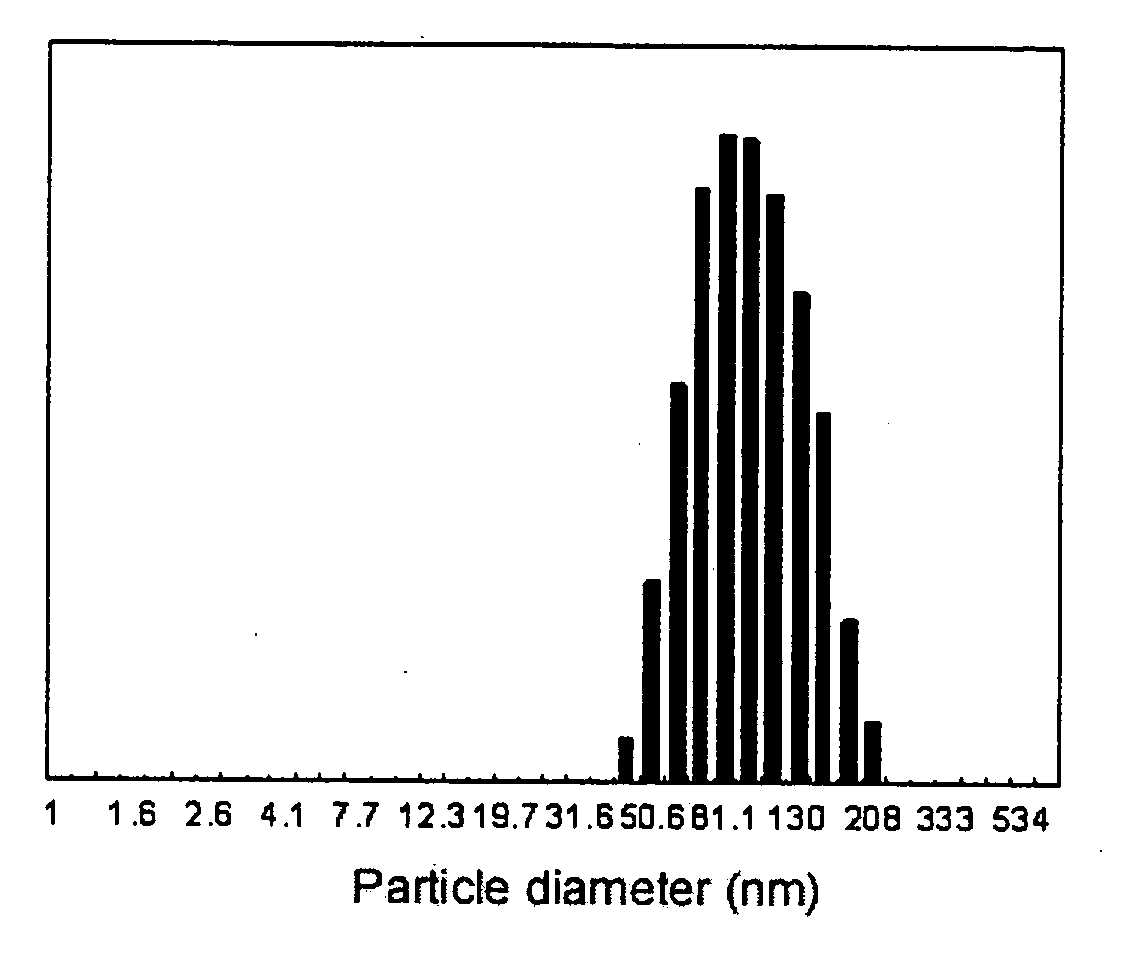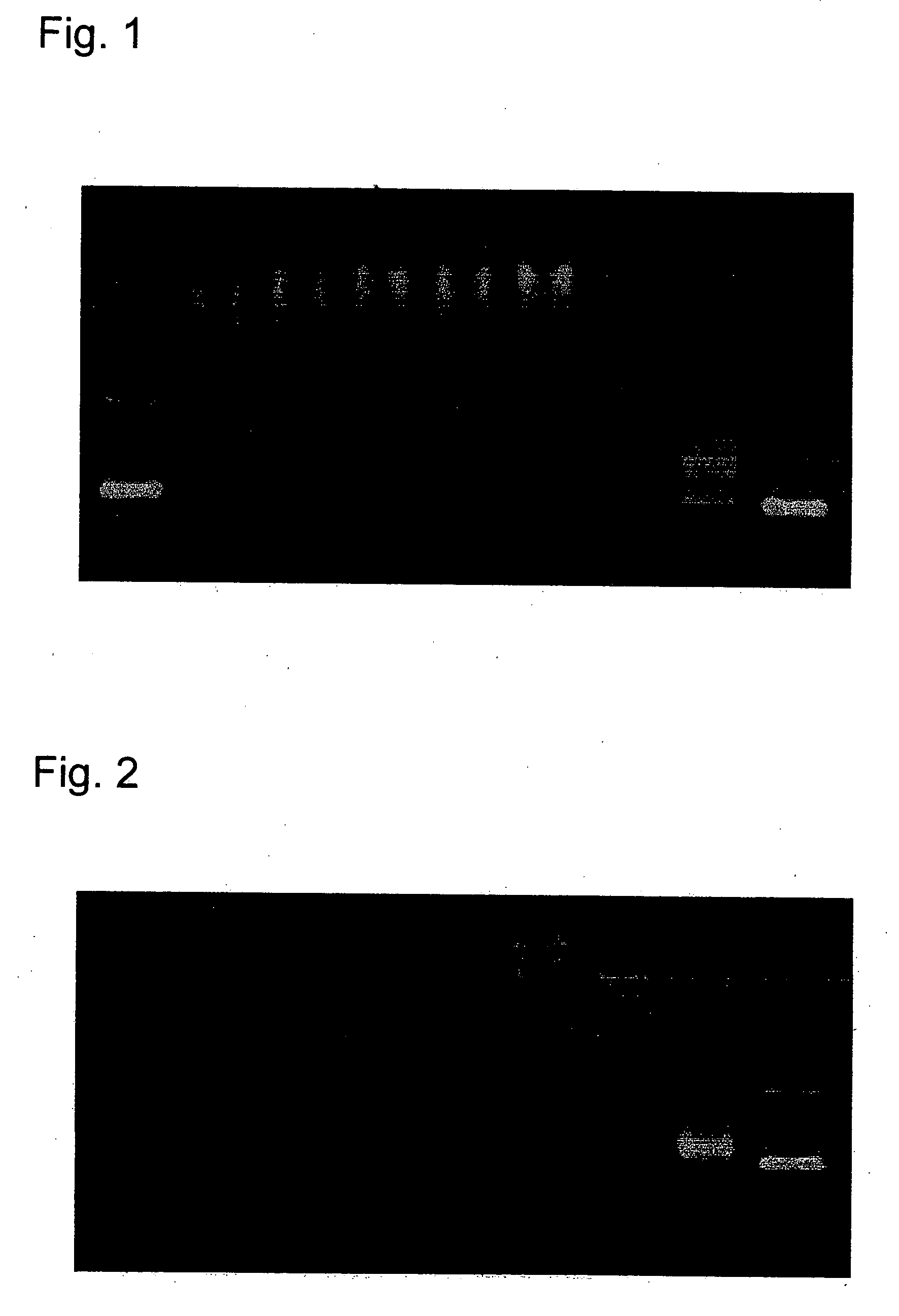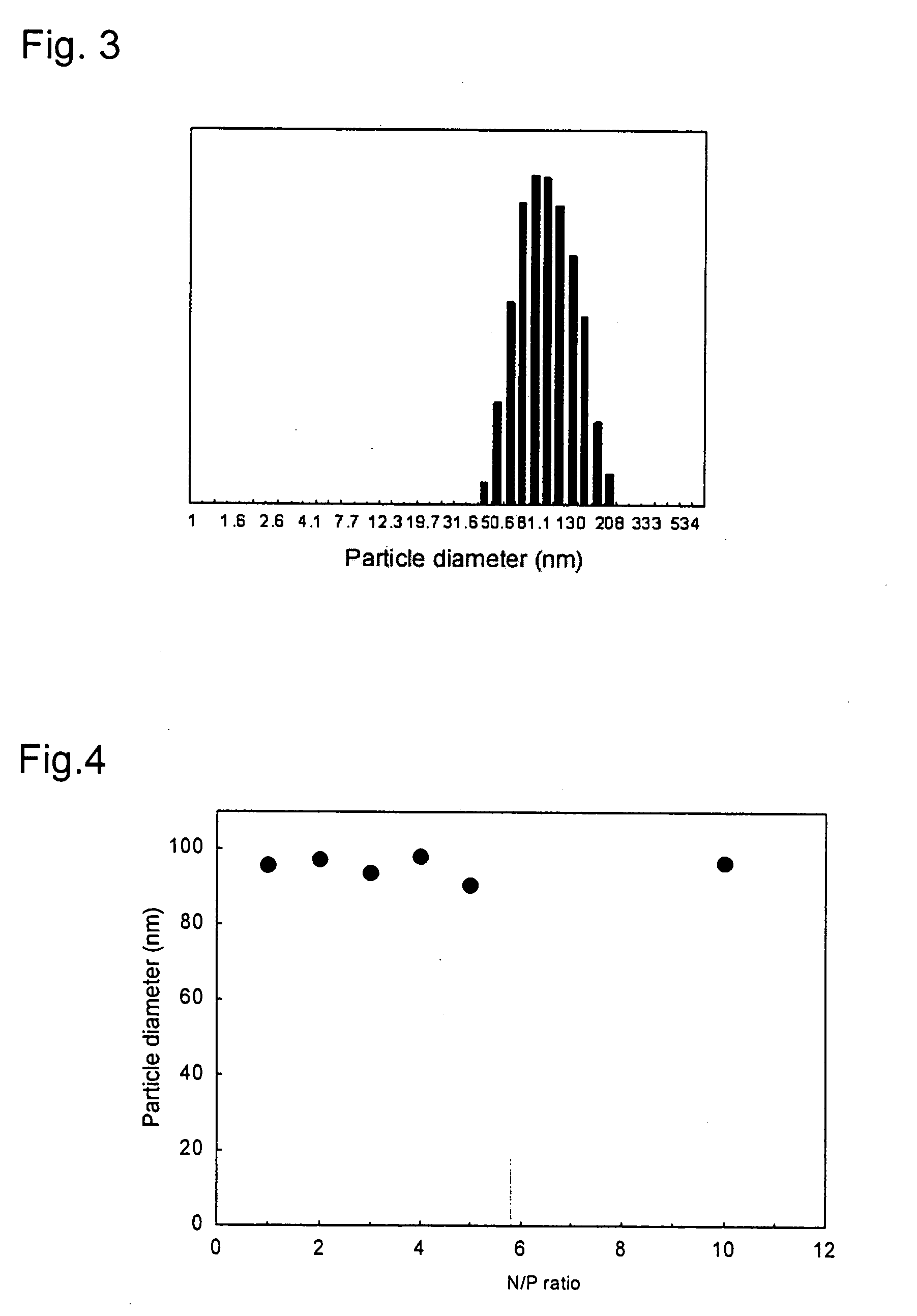Polyethylene glycol/polycation block copolymers
a polyethylene glycol and polycation block technology, applied in the field of block copolymers, can solve the problems of difficult control of these factors, limited study of polycation, and insufficient use stability of physiological conditions of polyethylene glycol under physiological conditions, and achieve the effect of higher gene transfer effectivity
- Summary
- Abstract
- Description
- Claims
- Application Information
AI Technical Summary
Benefits of technology
Problems solved by technology
Method used
Image
Examples
example 1
Synthesis of Polyethylene Glycol / Poly(β-Benzyl-L-Aspartate)-Ac Block Copolymer
[0072]Polyethylene glycol (MeO-PEG-NH2) with methoxy at one end and aminopropyl at the other end, having an average molecular weight of 12,000 was dissolved in methylene chloride, and to which a solution of β-benzyl-L-aspartate-N-carboxylic anhydride (BLA-NCA) in a mixed solvent of N,N-dimethylformamide (DMF) and methylene chloride was added. Allowing the components to react at 40° C. for two days, polyethylene glycol-poly(β-benzyl-L-aspartate) block copolymer (MeO-PEG-PBLA) was obtained. Further the N-terminal was acetylated with acetic anhydride, to provide MeO-PEG-PBLA-Ac. The average molecular weight of the PBLA portion was 14,000 and the degree of polymerization was 68, as determined by 1H-NMR analysis.
example 2
Preparation of Polyethylene Glycol / Polycation Block Copolymer by Aminolysis with Morpholinopropylamine
[0073]
[0074]MeO-PEG-PBLA-Ac as obtained in Example 1 was dissolved in benzene and lyophilized. Morpholinopropylamine was distilled under reduced pressure with calcium hydride serving as a desiccant.
[0075]MeO-PEG-PBLA-Ac was dissolved in dry DMF, to which 10 (mol) eq. of morpholinopropylamine to the PBLA unit was added and stirred for 24 hours at 40° C. in argon atmosphere. After the 24 hours, the reaction solution was added dropwisely into 10% aqueous acetic acid solution, followed by dialysis against 0.01N-aqueous hydrochloric acid solution with a dialyzer with MWCO=3,500. Evaporating and lyophilizing the liquid inside of the dialyzer, the object product (MeO-PEG-MOPA) was obtained as a white solid. The structure of the polymer was confirmed by means of 1H-NMR.
[0076]In consequence, the peaks attributable to the benzyl groups in the MeO-PEG-PBLA-Ac completely disappeared and newly p...
example 3
Preparation of Polyethylene Glycol / Polycation Block Copolymer
[0077][wherein R
[0078]][0079]by aminolysis with diethylenetriamine
[0080]MeO-PEG-PBLA-Ac as obtained in Example 1 was dissolved 1 to in benzene and lyophilized. Diethylenetriamine was distilled under reduced pressure with calcium hydride serving as a desiccant.
[0081]MeO-PEG-PBLA-Ac was dissolved in dry DMF, to which 50 (mol) eq. of diethylenetriamine to the PBLA unit was added and stirred for 24 hours at 40° C. in argon atmosphere. After the 24 hours, the reaction solution was added dropwisely into 10% aqueous acetic acid solution, followed by dialysis against 0.01N-aqueous hydrochloric acid solution with a dialyzer with MWCO=3,500. Lyophilizing the liquid inside the dialyzer, the object product (MEO-PEG-DET) was obtained as a white solid.
[0082]The structure of the produced polymer was confirmed by 1H-NMR.
[0083]In consequence, the peaks attributable to the benzyl groups in the MeO-PEG-PBLA-Ac completely disappeared and newl...
PUM
| Property | Measurement | Unit |
|---|---|---|
| pKa | aaaaa | aaaaa |
| structure | aaaaa | aaaaa |
| hydrophilic | aaaaa | aaaaa |
Abstract
Description
Claims
Application Information
 Login to View More
Login to View More - R&D
- Intellectual Property
- Life Sciences
- Materials
- Tech Scout
- Unparalleled Data Quality
- Higher Quality Content
- 60% Fewer Hallucinations
Browse by: Latest US Patents, China's latest patents, Technical Efficacy Thesaurus, Application Domain, Technology Topic, Popular Technical Reports.
© 2025 PatSnap. All rights reserved.Legal|Privacy policy|Modern Slavery Act Transparency Statement|Sitemap|About US| Contact US: help@patsnap.com



